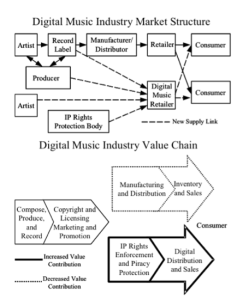The KIPP program was one of the reasons I came to Plan II in the first place. I remember as a senior in high school, sitting in on a world lit class and having Shiv Rawal come in to talk about the program. I thought it sounded like the coolest thing ever, and was exactly the sort of thing I wanted to do in college. I came into the KIPP program wide-eyed and excited, ready to transform a child’s life and figure out America’s schooling system.
I think more than anything, I was just nervous out of my mind at the beginning of the year. I remembered as a kid thinking that college students were the coolest people ever, and just being fascinated by them. I wasn’t all together sure if I was capable of being that much of a hero for a kid. Heck, I wasn’t sure if I could maintain a decent conversation with someone that age. I’m shy, bad with words, and went in hoping for the best.
Derrica was lovely—confident, positive, slightly sassy and mischeivious, but always with the best of intentions and maturity that always amazed me. Did I transform her world? I don’t think it was nearly as dramatic as I had imagined. She wasn’t suddenly acing all her classes, we weren’t calling each other in the middle of the night or anything and for the longest time I wasn’t sure if she was happy to see me when I showed up at her classroom door.
Second semester though, I realized that my visits really did make a difference to her. She told me that I was one of the few things that she liked about KIPP, made surprise booklets for me, and broke my heart when she told another mentor that she wished I had a car so that I’d never miss a week for lack of a ride. Recently we’d taken to doing arts and crafts, but we never keep our own creation, we always exchange them. I don’t know why but it warms my heart. I want to keep being there for her (and hopefully bring my damn car to campus) and not let her lose whatever we have. Maybe our relationship wasn’t as flashy as I imagined, but gee it’s been rewarding all the same.
As far as the class goes, it was pretty eye-opening to see the world from an educator’s view. Whether we looked at things from the eyes of a teacher, an administrator, a policy maker—each position had its own complications, its own intentions, and its own part. It’s pretty crazy that everyone has the same goal of improving education, yet it becomes such a messy process to achieve it. The class I think could be depressing at times, not going to lie. But there was definitely that ray of hope, and I think more than anything, a push to make us think about education. I felt the class showed me the value of education and made us willing to fight for it—and fight for it we will.


